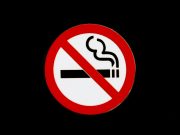“The reality is that the moment we light anything on fire, we open up a chemical factory. This applies to the tobacco in a cigarette. The fuel in a car. Or the wood in a stove. And this is why there is a movement across sectors to reduce and eliminate combustion or burning,” he said.
Of course more than an interest in harm reduction, Gorkun has a vested business interest. PMFTC, has just opened four IQOS stores in the Philippines. Found in the following locations: Eastwood Mall in Libis, Quezon City; SM Mall of Asia in Pasay City; SM Southmall in Las Piñas City; and Estancia Mall in Pasig City, the stores will be strictly selling the products to anyone 21 years and older. The shops will sell the IQOS devices, heat sticks and a range of accessories.
Local e-cig regulations
With regards to the regulatory atmosphere, last year Philippines President Rodrigo Duterte, had announced a ban on the use and import of e-cigarettes, adding that anyone caught using the products would be arrested. The ban had been announced during a late night news conference, after the President was asked about a Department of Health report confirming the first EVALI case in the country.
“I will ban it. The use and importation. You know why? Because it is toxic and the government has the power to issue measures to protect public health and public interest,” said Duterte at the time.
Thankfully, moving away from a ban to regulations, local authorities have since proposed clear guidelines on the production and importation of the products. Restrictions have also been set for the minimum age of use (at 18 years), the use of health warnings similar to the ones for cigarettes, and designated public places where consumers can vape.
The Non Combustible Nicotine Delivery System Regulation Act of 2020
The bill known as the “Non Combustible Nicotine Delivery System Regulation Act of 2020” has been voted for by a total of 88 congressmen. “Recognizing the need for a viable alternative to combustible cigarettes, governments around the world and leading public health institutions have explored the concept of harm reduction as a public health strategy to combat the smoking epidemic,” said Deputy House Speaker Deogracias Victor Savellano earlier this year.
“Harm reduction is grounded on the idea that people smoke for the nicotine but die from the tar. Hence, if there is a way to deliver nicotine to those who smoke cigarettes without the associated harmful by-products that are produced in combustible cigarettes, it would enable smokers to finally quit smoking,” he added.
Read Further: The Manila Times













